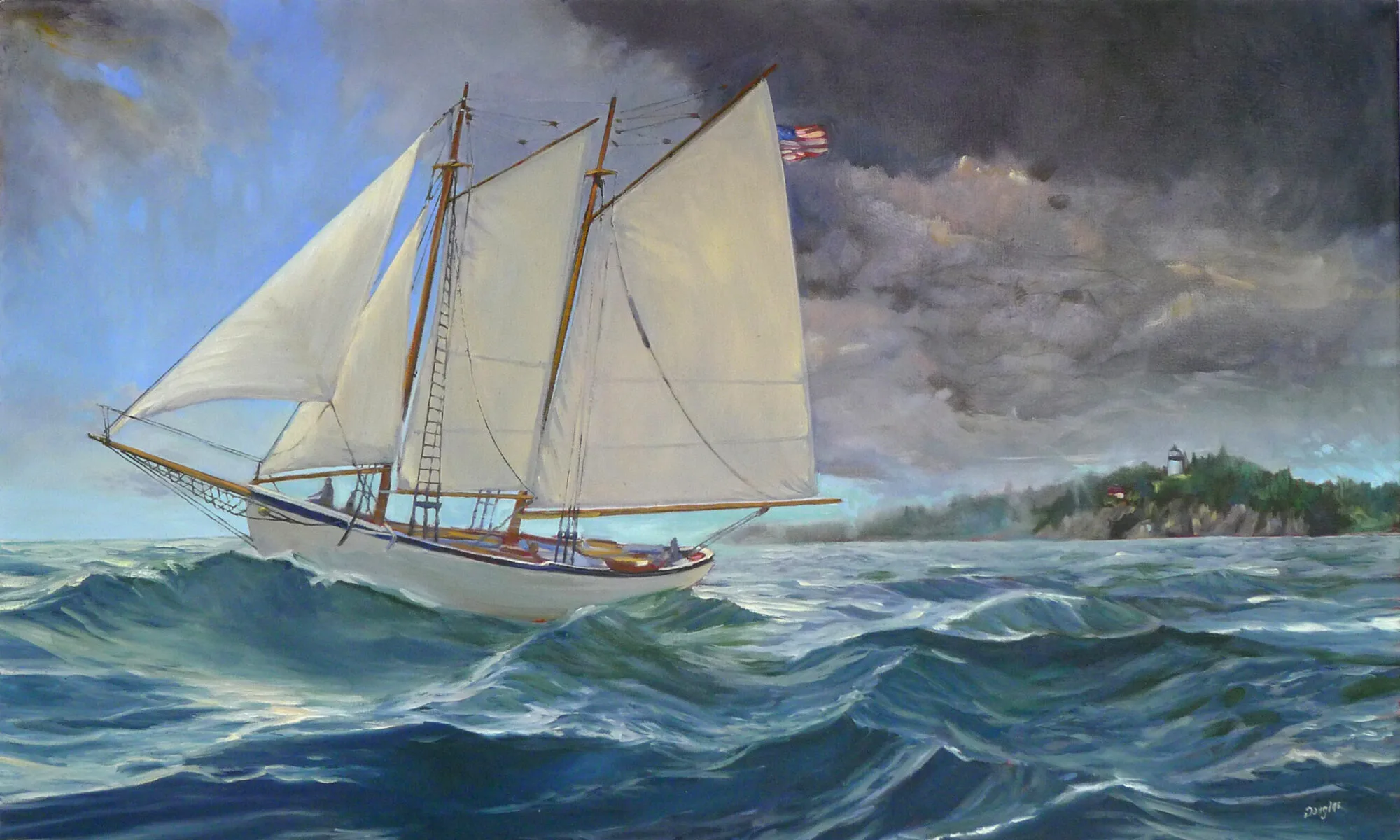In anticipation of Canada Day, let me tell you a story about our kind-hearted, open-handed neighbors.
 |
|
Wreck of the SS Ethie (Newfoundland), by Carol L. Douglas
|
Newfoundland was the greatest surprise of my Trans-Canada trip. It looks like the Scottish Highlands. That isn’t too surprising, since John Cabot reportedly sailed just 1800 miles west of Ireland to discover it. In geographical terms, that’s next-door-neighborly.
It’s a massive island, and it’s empty; fewer than a half-million people call it home. Other than St. John’s, there’s not a single municipality with more than 25,000 people. Most Newfoundlanders live in small fishing villages strung along the coastlines.
About 300 KM west of St. John’s is the small town of
Gander. It’s mainly notable for having gas and a
Tim Hortons right on the Trans-Canada. Considering the fantastic landscape all around it, it’s not a place a painter would tarry.
 |
|
Fog flowing down the mountains near Port-aux-Basques, Newfoundland
|
Gander exists because of the grandiosely-named
Gander International Airport. This was built in 1936, when trans-Atlantic flight was first developing. It’s the easternmost flat point on the North American continent, so it became the fueling point for planes traveling to and from Europe.
On January 11, 1938, Captain Douglas Fraser made the first recorded landing in a single-engine biplane, a de Havilland
Fox Moth VO-ADE.
The town reached its peak during the Second World War, when about 10,000 Allied airmen were billeted there. It was a refueling post for the Royal Air Force’s
Air Ferry, which brought American- and Canadian-built planes from North America to Britain. In 1940, it was the largest airport on the planet.
 |
|
Airman and Infantrymen at RCAF Station, Gander, 1943, Courtesy of Library and Archives Canada
|
Eventually jets got big enough to leave from New York or Toronto without refueling, and Gander became just another boom town gone bust.
Until September 11, 2001. Less than an hour after the planes hit the Twin Towers, North American airspace was closed. That left flights in limbo over the North Atlantic. 38 civilian and 4 military flights were ordered to land at Gander. They held more than 6,600 people—two thirds of the population of Gander—and they wouldn’t be going anywhere for a week.
There was only one Customs Officer assigned to Gander. All he knew was that planes had attacked New York and the Pentagon, and we might be at war. He had to vet all those people before letting them loose in Canada. He drafted a planeload of American soldiers to help.
 |
|
Under a milky sky (Hare Bay, Newfoundland), by Carol L. Douglas
|
Some passengers were on their planes for 30 hours waiting to be processed. Their only source of news was cell phones. When they finally disembarked, they were not allowed to carry any personal luggage; they left with the clothes on their backs.
Gander has 500 hotel rooms. These were allotted to plane personnel, with the idea that they needed to be rested and ready. That still left more than 6,000 people with no place to go.
Newfoundland and Labrador is the poorest province in Canada, but Gander’s churches, schools, shelters and private homes took in people. The remainder were transported to surrounding towns. Local bus drivers had been on strike, but they put down their picket signs and drove passengers to their destinations.
 |
|
Cape Spear Road (Newfoundland), by Carol L. Douglas
|
There wasn’t enough food, bedding, diapers, or formula available for purchase. Citizens opened their own pantries instead. They supplied meals, deodorant, soap, blankets, spare underwear, hot showers and washing machines. The phone company set up phone banks and temporary cable and internet. Citizens even provided entertainment, including whale-watching tours.
Six days later, when airspace was finally opened up, all 6,600 passengers were delivered to the airport on time. Not one person missed a flight.
Canada Day is July 1. This year they are celebrating their Sesquicentennial. We couldn’t ask for better neighbors.
POSTSCRIPT: Michael Fuller of Parrsboro Creative just told me there’s a Broadway musical about these events, called Come from Away. New York readers should check it out!





























